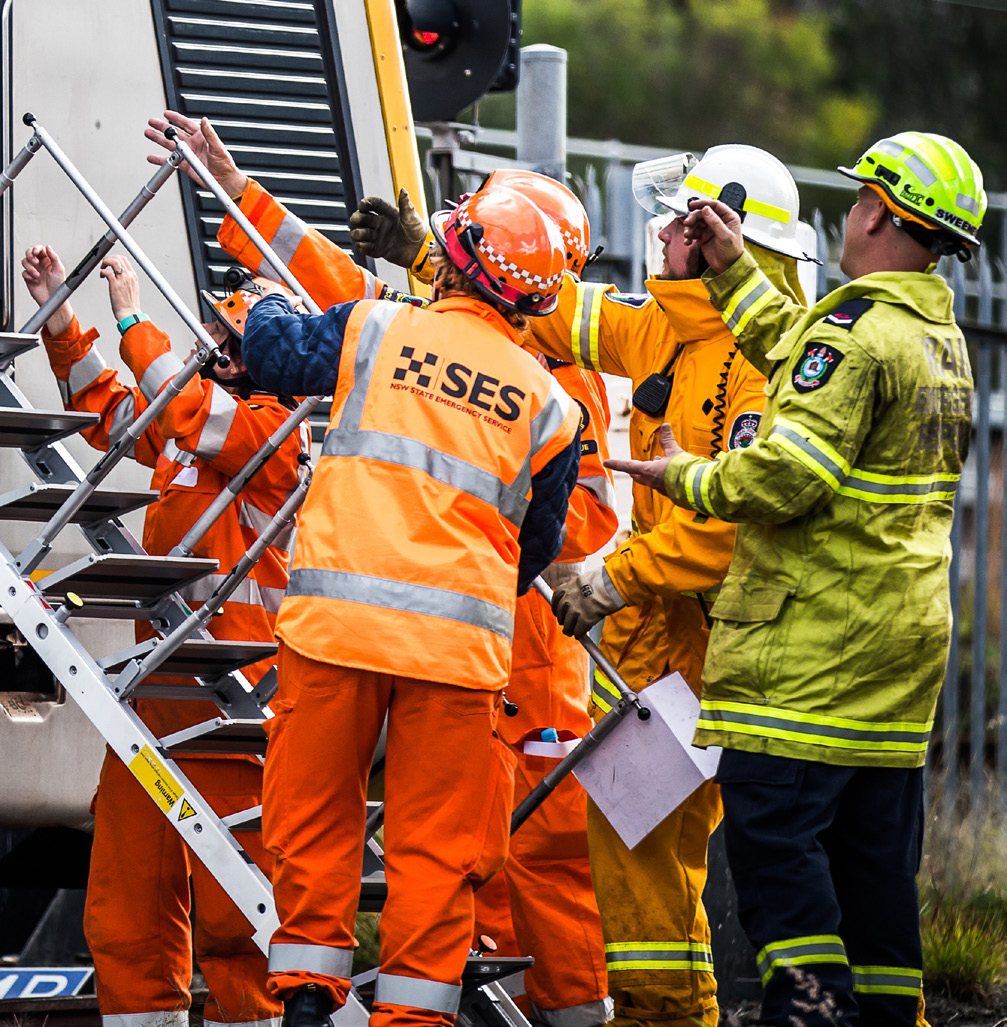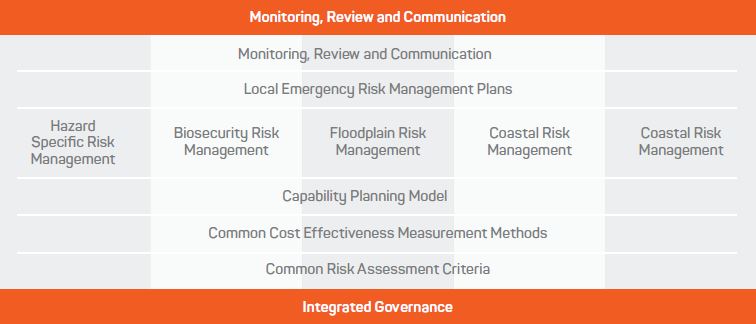NSW communities are exposed to natural and technological hazards that threaten the safety and wellbeing of residents and cause significant death, destruction and disruption. Natural disasters alone have killed 337 people in NSW between 1990 and 2015. Between the 1966-67 and 2013-14 financial years, natural disasters in NSW resulted in normalised insurances losses of $22.4 billion.1 While the direct economic cost of these events is unknown, it is likely to be two or three times this figure.
The scale of natural disaster effects are forecast to increase as a result of demographic changes, urbanisation and climate change.2 This significant risk profile necessitates the implementation of effective risk management to strengthen the safety and resilience of NSW. Recent disaster events and government reviews have shown a response-focus within the emergency management sector. The need exists for improved ways to manage emergency risks with a focus on mitigation.
To address identified gaps and disparities across hazard management, an Emergency Risk Management (ERM) Framework was developed and a State Level Emergency Risk Assessment (SLERA) was conducted in 2017. The expectation is that the framework will improve access to information, enhance decision-making and strengthen capability and capacity.

A training exercise involving multiple emergency service agencies was held in NSW in 2017. Image: Sharon Quandt
The ERM Framework
In NSW, the State Emergency Management Committee (SEMC) is responsible for ensuring there is a system to manage emergencies that is robust, effective and flexible enough to deal with hazards. Throughout 2016-17, the SEMC developed the ERM framework to provide an overarching structure for investment and prioritisation based on best available information for hazards and risks that threaten NSW.3 The framework ensures that emergency response in NSW is integrated, systematic and efficient. Importantly, it builds on and leverages the strengths of existing hazard-specific risk management approaches to improve the understanding,
prioritisation, effectiveness and efficiency of emergency risk management in NSW (see Figure 1).

Figure 1: The influence of risk rejection and community engagement in tsunami readiness (adapted from Paton et al. 2010).
The ERM Framework builds systems, capacity and culture to identify, assess, analyse and manage emergency risks based on ten outcomes across four priority areas:
- Governance and Strategy
- Methodology and Standards
- Engagement and Communication
- Capability and Planning.
2017 State Level Emergency Risk Assessment
Essential to implementing the framework is understanding, analysing and evaluating emergency risks at a state level. The SLERA was undertaken in 2017 and profiled the 12 priority hazards for NSW. It represents a collaboration of the response agencies, government departments and private sector organisations that contribute to emergency management in NSW.4 Engagement with these stakeholders was undertaken through face-to-face workshops, formal meetings and correspondence. This ensured that information
and knowledge delivered a relevant, high-quality and meaningful risk assessment.
The methodology used in SLERA was informed by the National Emergency Risk Assessment Guidelines 2015 (NERAG).5 A short, intensive consultation process was conducted with representatives from response agencies and government departments with leadership roles or expert knowledge in the hazards being assessed. During the 26 workshops, key issues emerged that influenced the mitigation, response and recovery for many of the hazards. These issues require a state-wide coordinated response and resulted in ten top priorities identified for action, being:
- enhancing land-use planning
- improving data and risk modelling
- adapting to climate change
- strengthening local emergency management plans
- boosting infrastructure resilience
- embedding business continuity planning
- conducting training exercises
- aligning state funding to disaster resilience
- coordinating community engagement
- making public warnings consistent.
These priorities deliver outcomes of the ERM framework. Complementing this work will be the hazard-specific treatments that agencies can undertake and expand on to improve the resilience of NSW communities. The implementation of hazard-specific treatments, in conjunction with priority actions identified through the strategic themes, is essential for the effective mitigation and response to existing and future hazards in NSW.
These priorities and other recommendations of the SLERA will be implemented over the next five years. Lessons learnt will be incorporated into future NSW risk assessments.
Footnotes
- Crompton R, McAneney J 2008, Normalised Australian Insured Losses from meteorological Hazards: 1967-2006.
- Commonwealth of Australia 2011, National Strategy for Disaster Resilience.
- New South Wales Government 2017, Emergency Risk Management Framework.
- New South Wales Government 2017, 2017 State Level Emergency Risk
Assessment. - National Emergency Risk Assessment Guidelines 2015. At: https://knowledge.aidr.org.au/resources/handbook-10-national-emergency-risk-assessment-guidelines/


